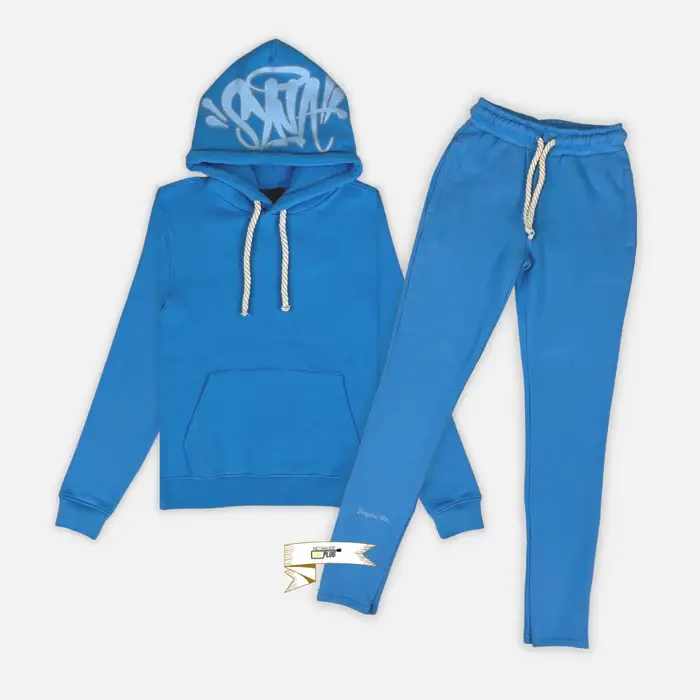Trapstar: The Rise of a Streetwear Phenomenon
Introduction
Founded in 2005 in London, Trapstar has grown from a local brand into a globally recognized streetwear label. Known for its bold graphics, unique designs, and cultural significance, Trapstar encapsulates the essence of urban fashion and youth culture. This article explores the brand’s journey, its influence on streetwear, and its unique collaborations and offerings.
The Origins of Trapstar
Trapstar was established by a group of friends—Mickey, Lee, and Will—who sought to create a brand that resonated with the youth of London. Initially, the brand began as a small operation selling T-shirts and accessories at music events and pop-up shops. The name “Trapstar” reflects the hustle and grind of urban life, drawing inspiration from the music and culture that surrounded them, particularly the British rap and grime scene.
The brand quickly gained traction within the underground music community, particularly among artists who were looking for a fresh, authentic aesthetic. Trapstar’s early designs often featured striking graphics and thought-provoking slogans that resonated with the struggles and aspirations of the youth. The brand’s commitment to authenticity and community engagement helped it carve out a unique space in the highly competitive streetwear market.
Aesthetic and Design Philosophy
Trapstar’s design philosophy blends influences from street culture, music, and art, resulting in a distinctive aesthetic that is both bold and accessible. The brand is known for its high-quality materials and attention to detail, which sets it apart from many other streetwear labels. Trapstar’s collections often feature oversized fits, vibrant colors, and intricate graphic designs that make a statement.
The brand frequently collaborates with artists and musicians to create limited-edition pieces that reflect current trends and cultural moments. These collaborations not only showcase Trapstar’s versatility but also reinforce its connection to the music scene. By merging fashion with art and music, Trapstar has successfully positioned itself at the intersection of these vibrant cultural spheres.
Cultural Impact and Celebrity Endorsements
Trapstar’s rise to prominence has been significantly aided by endorsements from numerous celebrities and influencers. Artists such as Stormzy, Skepta, and Drake have been spotted wearing Trapstar, elevating the brand’s status in the streetwear community. This visibility in the media and among popular figures has allowed Trapstar to reach a wider audience, both in the UK and internationally.
The brand’s association with influential figures in the music industry has fostered a sense of authenticity and credibility. Trapstar’s pieces often serve as a badge of honor for those who resonate with the street culture it represents. By aligning itself with influential artists, Trapstar has tapped into the cultural zeitgeist, making its clothing not just a fashion statement but a symbol of a lifestyle.
Collaborations and Limited Editions
One of the key strategies that has fueled Trapstar growth is its commitment to collaborations and limited-edition releases. The brand has partnered with various artists, musicians, and even sports teams to create exclusive collections that generate buzz and excitement. For instance, Trapstar collaborated with Nike to produce a limited-edition sneaker line that quickly sold out, highlighting the brand’s appeal and marketability.
These collaborations often come with unique storytelling elements that engage consumers on a deeper level. Each collection is meticulously crafted to reflect the essence of the partner, be it through graphics, color palettes, or the overall concept. This approach not only enhances the brand’s credibility but also fosters a sense of community among fans who are eager to partake in these exclusive drops.
Trapstar’s Influence on Streetwear
As streetwear continues to evolve, Trapstar has played a significant role in shaping its direction. The brand’s ability to adapt to changing trends while remaining true to its roots is a testament to its resilience and vision. Trapstar has also been instrumental in promoting inclusivity within the fashion industry, challenging traditional notions of what streetwear should look like.
Moreover, Trapstar has been a pioneer in addressing social issues through fashion. Many of its collections draw attention to topics such as mental health, identity, and community struggles, prompting discussions that resonate with its audience. This socially conscious approach not only enhances the brand’s image but also fosters a sense of belonging among its followers, who feel connected to the brand’s mission.
The Future of Trapstar
Looking ahead, Trapstar continues to innovate and expand its reach. The brand’s plans for the future include exploring new markets and launching new product lines while maintaining its commitment to quality and authenticity. With the global demand for streetwear on the rise, Trapstar is well-positioned to capitalize on this trend, particularly as it expands its international presence.
In addition to clothing, Trapstar is also exploring opportunities in lifestyle products, including accessories and home goods, to further engage its audience. The brand’s ability to evolve while remaining grounded in its original ethos will be key to its continued success.
Conclusion
Trapstar’s journey from a small London startup to a global streetwear powerhouse is a testament to the power of authenticity, creativity, and cultural engagement. By intertwining fashion with music and social commentary, Trapstar has created a brand that resonates deeply with its audience. As it continues to innovate and grow, Trapstar is poised to remain a significant player in the streetwear landscape, inspiring the next generation of artists, designers, and fashion enthusiasts.




